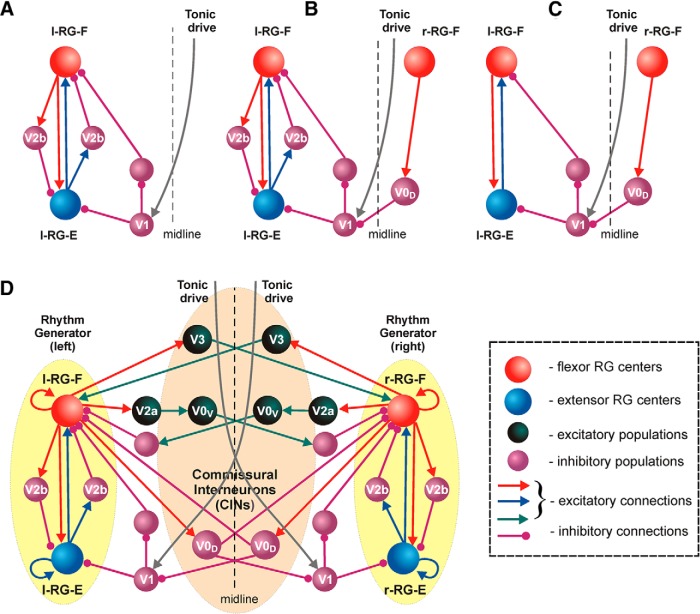Figure 10.
Role of V1 and V2b interneurons in flexor–extensor alternation. A, B, V2b neurons mediate mutual inhibition between flexor and extensor half-centers on each side of the cord. V1 neurons (involved in interactions between rhythm-generating centers) receive excitation from the contralateral side of the cord. This excitatory input should include tonic excitatory drive. These V1 neurons provide an additional inhibition of the ipsilateral extensor center and may disinhibit the ipsilateral flexor half-center. B, The activity of the above V1 cells is negatively modulated (reduced) in phase with the contralateral flexor activity via inhibition from the contralateral V0D CINs. C, The above modulation of V1 neuron activity allows them to secure flexor–extensor alternation after removing V2b neurons in the intact cord. D, The full schematic of bilaterally interacting rhythm generators in the spinal card with incorporated V1 and V2b circuits.

